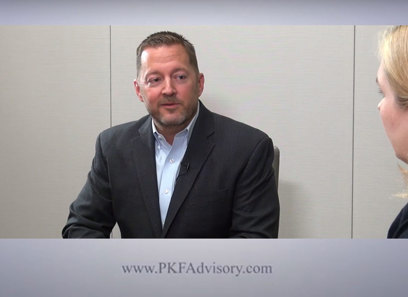The Duty of Mergers and Acquisitions fit Industry Patterns and Technologies
Mergers and acquisitions have progressively end up being an important system for companies seeking to navigate the complexities of contemporary markets. As markets grapple with quick technical innovations and shifting consumer needs, recognizing the effects of M&An approaches offers important insights into future patterns.
Comprehending M&A Dynamics
Mergers and acquisitions (M&A) often work as critical techniques for business seeking development, competitive advantage, or market combination. Comprehending the dynamics of M&A is important for both specialists and stakeholders in browsing the complicated landscape of business purchases. M&A procedures generally entail several phases, consisting of target identification, due diligence, arrangement, and assimilation, each bring its own difficulties and dangers.
The inspirations behind M&A can differ significantly; companies may go after these techniques to access new markets, obtain ingenious modern technologies, or accomplish operational harmonies. In addition, changes in regulatory environments and economic problems can influence M&A task, motivating companies to adjust their techniques accordingly.
Effective execution of M&A transactions calls for a complete understanding of the cultural, economic, and operational ramifications involved. Companies must evaluate not only the measurable aspects, such as appraisal and monetary efficiency, yet also the qualitative factors, including corporate culture and staff member belief. Ultimately, the ability to effectively manage these characteristics can establish the success or failing of an M&An initiative, underscoring the demand for calculated planning and notified decision-making throughout the process.
Influence on Market Competitors
The outcomes of mergers and purchases on market competition can be profound, typically reshaping sector landscapes. When business settle, they frequently enhance their market power, enabling them to establish prices much more freely and dictate terms to customers and providers. This raised power can lead to minimized competitors, as smaller players might have a hard time to complete against the combined resources and capabilities of the joined entity.
Furthermore, M&A tasks can lead to market focus, where less companies dominate the industry. This concentration can stifle competition, causing greater prices and less options for customers. The affordable effects of procurements and mergers are not universally adverse. In many cases, they can produce effectiveness that benefit consumers, such as boosted services or lower costs with economic climates of scale.

Development Via Partnership
Partnership in between companies can act as a significant driver for development, making it possible for firms to leverage each other's resources and toughness. They produce a fertile ground for the development of new ideas, items, and technologies when organizations combine their proficiency. This synergy often causes improved problem-solving abilities, allowing firms to take on complex difficulties that would be tough to deal with separately.
Furthermore, collaborative efforts can increase the r & d process. By merging their technical capabilities and intellectual resources, firms can considerably lower time-to-market for cutting-edge remedies. This is specifically noticeable in markets where rapid technical improvements are critical, such as telecoms, drugs, and details innovation.
In addition, partnerships formed with mergings and purchases can cultivate a society of innovation - Mergers and Acquisitions. When workers from various backgrounds and ability collaborated, they contribute varied viewpoints that can influence imagination and cause innovation technologies. This joint setting not just boosts staff member spirits however additionally improves retention prices, as people feel much more engaged in a dynamic work environment
Sector-Specific Patterns
Sector characteristics are progressively shaped by sector-specific trends that affect the techniques and outcomes of mergers and purchases. Different markets are experiencing special stress and opportunities, triggering business to go after M&A as a tactical device to deal with these challenges.
In modern technology, the quick pace of innovation and electronic improvement drives companies to acquire start-ups to improve their abilities and increase their item offerings. In a similar way, the medical care sector is seeing combination as organizations look for to boost operational performances and widen their service arrays in response to regulatory changes and progressing person requirements.
The durable goods market is also undergoing considerable adjustments, with sustainability coming to be a crucial focus. Mergers and procurements are being leveraged to include eco-friendly techniques and items, aligning with customer choices and regulatory expectations.
In financing, the rise of fintech is triggering typical organizations to acquire innovative tech firms to stay competitive and enhance consumer experiences. These sector-specific fads not only determine the nature of M&A task yet additionally highlight the necessity for firms to continue to be agile in an ever-evolving market landscape. Comprehending these patterns is important for stakeholders to anticipate shifts and utilize opportunities efficiently.
Future Outlook of M&A
A transformative era is on the horizon for purchases and mergings, driven by technical developments, governing adjustments, and shifting consumer habits. Business are progressively leveraging data analytics and man-made knowledge to recognize possible targets and improve due diligence processes, improving decision-making performance. This technical combination not only accelerates transaction timelines yet likewise enhances the accuracy of assessments.

As customer choices remain to evolve, particularly towards sustainability and electronic engagement, companies will certainly look for procurements that line up with these trends. Firms focusing on electronic systems or green modern technologies are anticipated to end up being attractive targets, reflecting a more comprehensive industry commitment to adjust and grow Mergers and Acquisitions in transforming market conditions.
Inevitably, the future of M&A will certainly be defined by dexterity and responsiveness, as companies acknowledge the necessity of critical collaborations to stay competitive. The landscape will certainly prefer those that can successfully straighten their purposes with arising fads while stabilizing governing complexities and technological innovations.
Final Thought
Mergers and acquisitions offer as drivers for market transformation, cultivating development and boosting competitive dynamics. By facilitating resource sharing and expertise combination, M&An initiatives drive operational efficiencies and accelerate the advancement of new modern technologies. As industries remain to advance in feedback to consumer demands and market changes, the tactical quest of M&A will certainly continue to be essential fit future fads and promoting lasting growth. Stressing collaboration, these activities will inevitably redefine the landscape of different sectors.
As industries grapple with quick technical advancements and moving customer needs, comprehending the implications of M&A strategies provides beneficial insights right into future patterns.Mergers and acquisitions (M&A) frequently offer as critical approaches for business seeking growth, affordable benefit, or market loan consolidation.Additionally, M&An activities can lead to market focus, where fewer companies control the sector. These sector-specific fads not only determine the nature of M&An activity yet additionally highlight the requirement for firms to stay nimble in an ever-evolving market landscape. As markets continue to evolve in action to customer demands and market shifts, the strategic search of M&A will certainly stay vital in shaping future patterns and cultivating sustainable development.